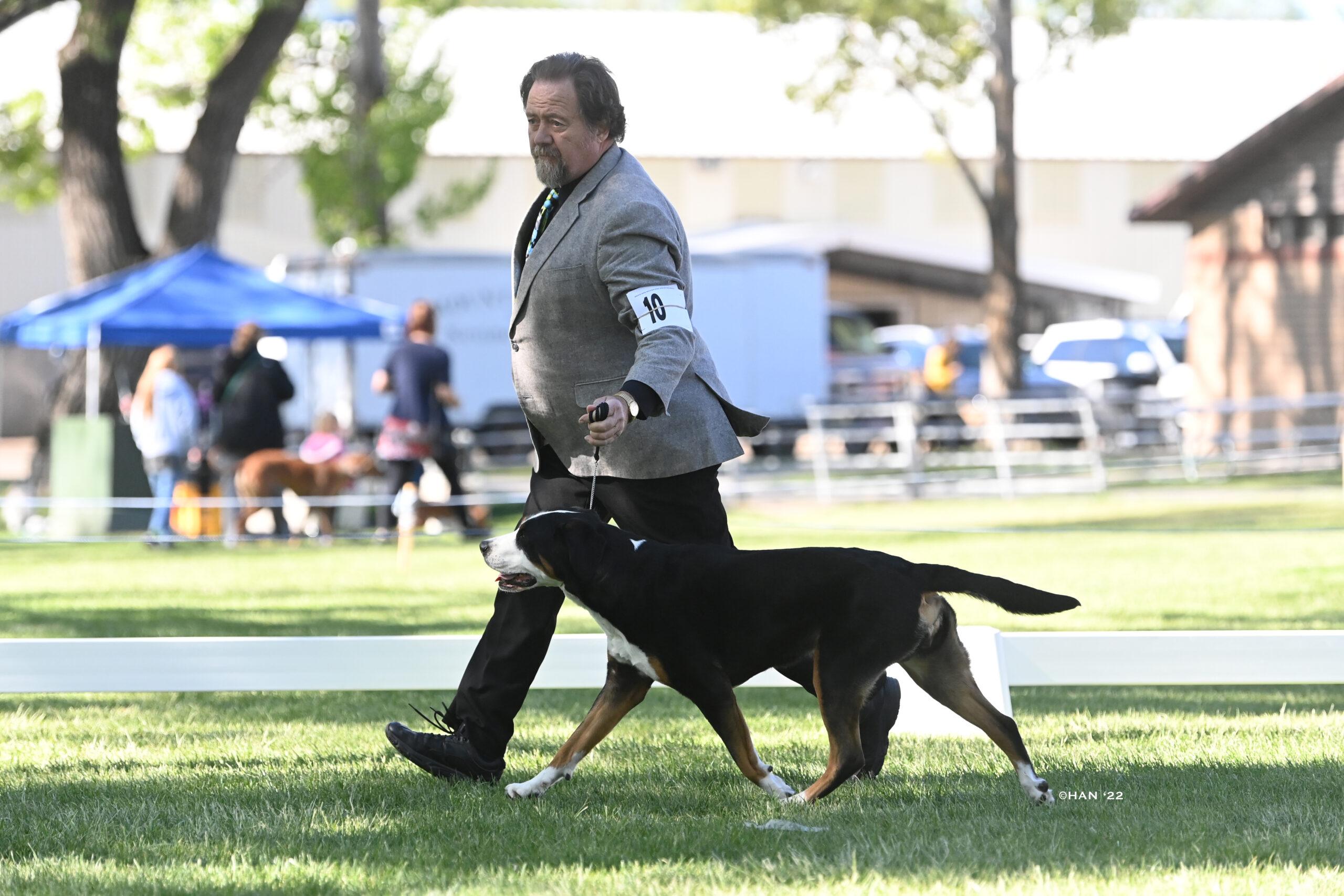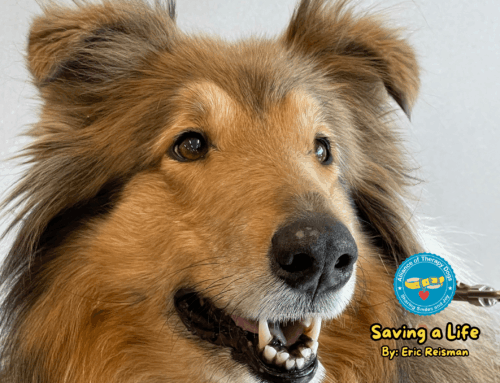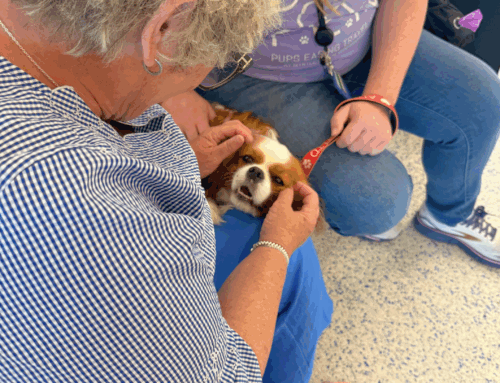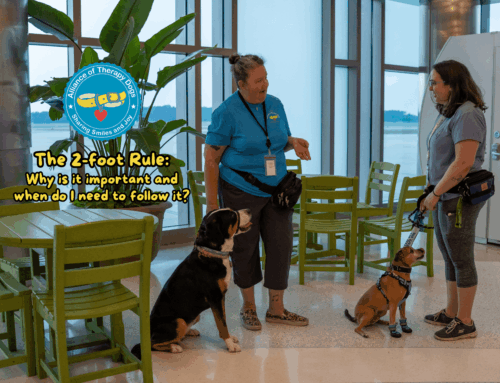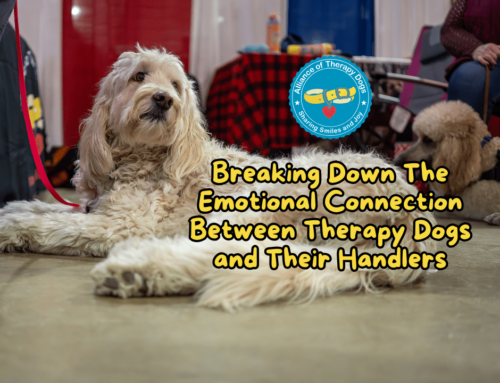Dog Conformation Training & Being A Therapy Dog
Both dog conformation training and therapy dog training require a handler to have patience, determination, and an understanding of their canine’s abilities and body language. A therapy dog needs to be friendly and have a calm demeanor to provide comfort to those in need, while a dog in conformation trials must display obedience and confidence. A combination of training in both areas can turn your canine companion into a well-rounded performer, no matter the setting.
Best In Show
The hit film Best In Show (2000) probably made you laugh but also gave you some wrong ideas about competitive show dogs! For starters, the official term for a dog show is conformation and it is the most popular competitive dog event. To earn points the dogs are judged against a standard for their particular breed. Something the film did get right- the event is highly competitive and training is required.
Dogs That Do It All
Training your pup with new commands and tricks can stimulate their physical and mental health. It can also help strengthen the bond between you and your dog.
Alliance of Therapy Dog member Sandy Schiller started training Phoebe, a Pembroke Welsh Corgi, to be a therapy dog when she was seven weeks old.
“The focus was to develop good manners and to expose us to as many environments as possible,” says Schiller. “We passed the certification evaluation with ATD once Phoebe was a year old. Once we started visiting I wanted to develop our teamwork because we had all the skills, we just didn’t connect as a team as much as I would like.”
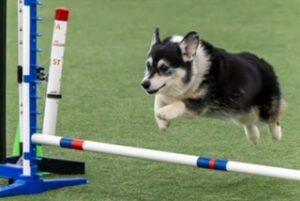
Photo Credit: ATD Member Sandy Schiller
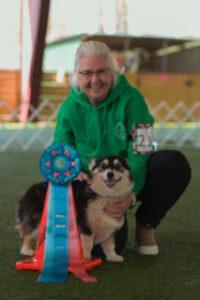
Photo Credit: ATD Member Sandy Schiller
When Phoebe turned two, Schiller began their conformation training as a way to develop their teamwork, with no idea they would compete. They tried several classes and sports before getting involved in Rally, which according to the American Kennel Club, is where a dog and their handler move through a course of 10 to 20 signs.
“To perform well in Rally both the dog and the handler need to work as a unit. We worked on the skills and eventually progressed to working off-leash in the ring. The benefit to our therapy work is that we now navigate facilities as a unit and I am much more aware of her cues and she takes directions from me with quiet movements and signals,” says Schiller.
Schiller also shares that Phoebe earned her Rally Obedience Championship title and this year, they have qualified for the third time to attend the AKC Rally Nationals in the Championship class.
Another Alliance of Therapy Dogs member who has therapy dogs and conformation dogs is Laurie Schlossnagle. Both her dogs Emme, a Beagle, and Bell, a Greater Swiss Mountain Dog started training when they were puppies.
“I got started in dog sports in about 2004 when I visited a dog show and thought, ‘My dog and I can do that!’ The rest, as they say, is history,” says Schlossnagle.
Schlossnagle says both Emma and Bell are breed conformation champions who both compete in Rally, Obedience, and Scent Work. Though the training is different for each dog.
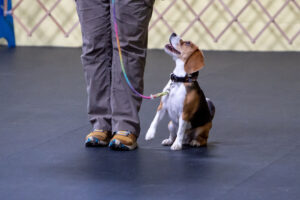
Photo Credit: ATD Member Laurie Schlossnagle
“I work a lot on foundations that support whatever we do. Additionally, we work on specific skills for specific sports and activities. Foundations are foundations regardless of the activity for my dogs. But every dog and every handler is different. For example, I have worked on polite leash walking with my Swissy since she came home because I knew she was going to be a big dog and I wanted her to have a good foundation in that from the beginning. For my beagle, we have worked hard on coming when called because she’s a beagle and likes to follow her nose,” says Schlossnagle.
When they are not competing, both Schlossnagle and Schiller enjoy volunteering with their dogs and sharing their tricks and hard work with residents.
Schlossnagle says her favorite mainstream tricks to perform are wave, spin, and bow.
Schiller says she’s used some of the Rally skills as tricks during a therapy dog visit.
“I feel that anything a therapy team can do to develop control and teamwork can only benefit them on therapy visits and most of the performance sports are excellent for developing that connection and teamwork,” says Schiller.
Become A Therapy Dog Handler
Volunteering with your dog is a wonderful way to give back to your community. At Alliance of Therapy Dogs, we are always looking for new members. You can start by visiting our Join, Be A Member Page. From there, you will submit a background check and your member application forms. One of the forms is a health form, which you will need your local veterinarian to complete. After you have cleared a background check, submitted a completed vet form, and have studied the rules and regulations, you’re ready to take the certification test!
For test preparation, you can watch a video of what to expect at our Alliance of Therapy Dog certification test.
Schiller says her dog Phoebe, is incredibly intuitive and on therapy dog visits will gravitate to people who are stressed, grieving, or fighting a panic attack.
“Watching her gain the focus of someone who is struggling and then seeing them visibly relax as they just start talking to her or petting her is what keeps us returning week after week,” says Schiller. “We have had a dementia patient start talking about their dogs when they haven’t spoken a word in weeks; we had someone tell us that after visiting with Phoebe they felt like they could breathe for the first time in days; and a person who was grieving for a co-worker that had been killed in a car accident say that Phoebe absorbed their grief.”
Enter Conformation Events
And if you are looking to enter your dog into conformation events, Schiller has some recommendations on how to begin your dog conformation training journey.
“Canine Good Citizen Classes are good for any team to start. Some kennel clubs offer handling classes for the conformation ring that work on leash skills and having strangers touch your dog. Rally and Obedience are great for developing teamwork and close control because as you advance the skills are performed off leash so you and your dog need to be able to connect and communicate without the benefit of the leash,” says Schiller.
Help get your dog ready for their dog show debut – and perhaps dream of one day entering the Westminster Kennel Club Dog Show – with our therapy dog training tips and tricks.
Happy training!
Cover Photo: Photo Credit: Diana Han, Nor Cal Bulldogger

